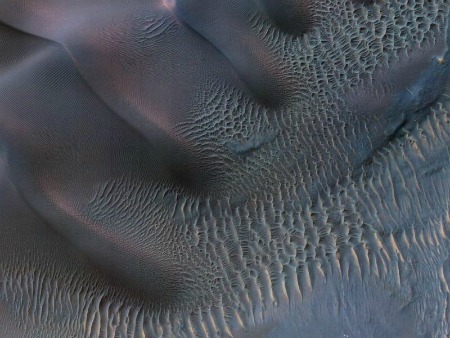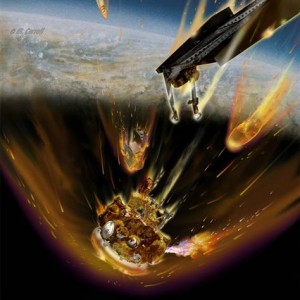
CRIRES model-based computer-generated impression of the Plutonian surface, with atmospheric haze, and Charon and the Sun in the sky.
The official budget won’t be released until Monday, but word is NASA’s unmanned program will see big cuts and Mars missions will take the brunt of them. Sadly, when it comes to our budget priorities as of late, we are one screwed-up country: [Read more…]








